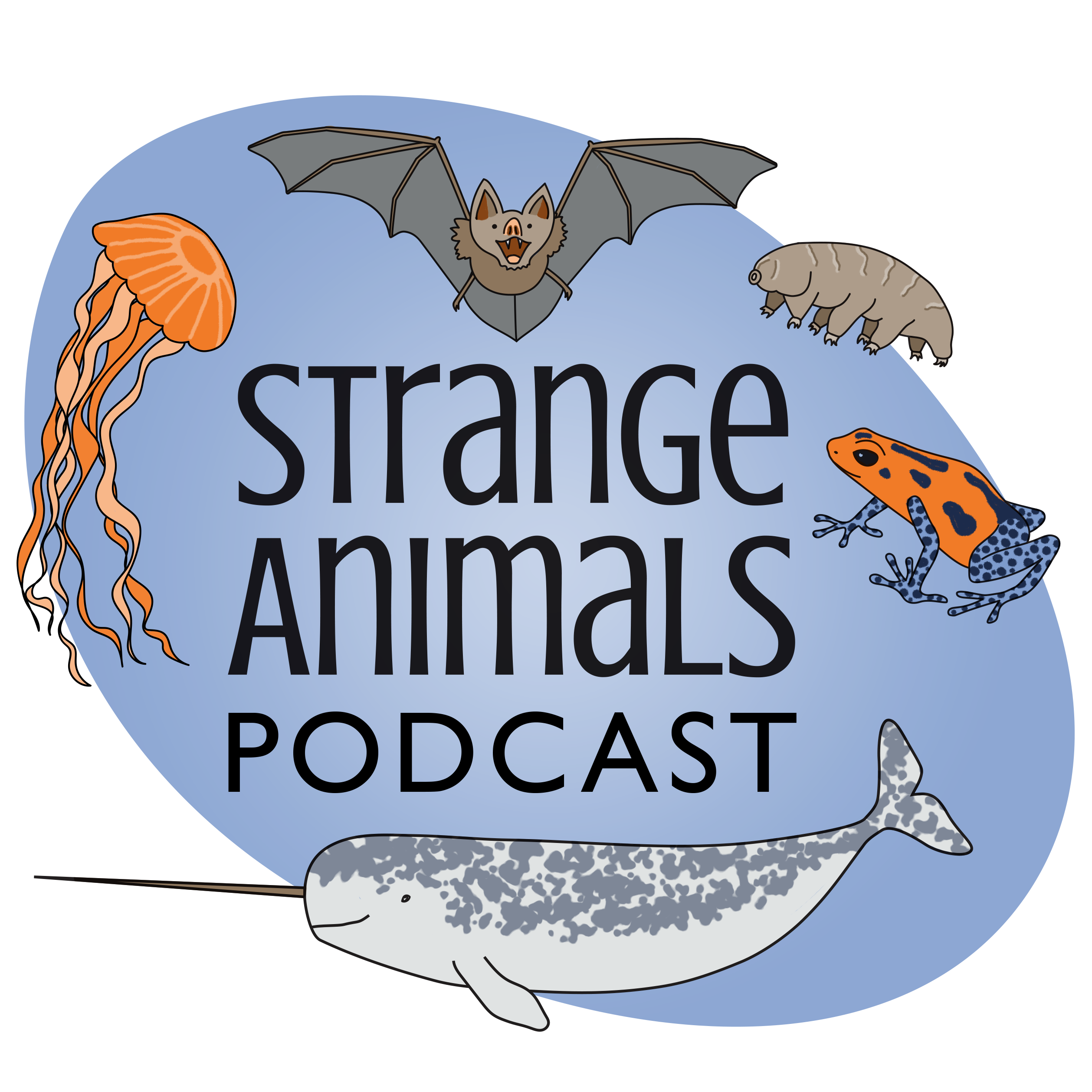Episode 301: Hairless Mammals

Thanks to Liesbet for this week's suggestion, about two mammals that have evolved to be hairless!\n\nHappy birthday this week to Declan and Shannon!\n\nThe hairless bat has a doglike face and a doglike tail but (and this is important) it is not a dog [photos from this site]:\n\n \n\nThe naked mole-rat's mouth is behind its teeth instead of the usual "my teeth are in my mouth" kind of thing:\n\n\n\nShow transcript:\nWelcome to Strange Animals Podcast. I\u2019m your host, Kate Shaw.\nThis week we have a suggestion from Liesbet, who asked about furless animals. We\u2019re going to learn about two mammals that don\u2019t have fur, and they\u2019re not ones you may be thinking of.\nBut first, we have two birthday shout-outs! Happy birthday to Declan and Shannon! I hope both your birthdays are so amazing that whatever town you live in finishes off the day by giving you the key to the city. What do you do with the key? I don\u2019t know, but it sounds like something to brag about.\nMammals are famous for having hair, but not all mammals actually have hair. Cetaceans like whales and dolphins have lost all their hair during their evolution into marine animals, although before a baby whale is born it has a little bit of fuzzy hair on its head. Other mammals, like humans, pigs, walruses, and elephants, have evolved to only have a little hair. There are also domesticated mammals that have been bred to have no hair, like sphynx cats and Chinese crested dogs.\nThere are other domesticated hairless mammals, though, including two types of guinea pig. The skinny pig only has a little bit of fuzzy hair on its face and ears, while the baldwin pig only has a tuft of hair on its nose. But the animals we\u2019re going to talk about today are hairless animals you may not have heard of.\nFor instance, the hairless bat, which lives in parts of Southeast Asia. Its dark gray body is almost completely hairless, although it does sometimes have little patches of fuzz on the head and tail, and longer bristles around the neck. It\u2019s nocturnal and eats insects, but since it\u2019s a fairly large bat, around 6 inches long, or 15 cm, it can eat fairly large insects. It especially likes grasshoppers, termites, and moths.\nThe hairless bat roosts in colonies of up to a thousand individuals, and it lives in caves, hollow trees, or rock crevices. Although it uses echolocation, it doesn\u2019t have a nose leaf like many microbats have, but instead has a little doglike snout. Its tail is skinny like a little dog\u2019s tail instead of being connected to the hind legs or body by patagia. It has a little throat pouch that secretes strong-smelling oil.\nIt also has a sort of pocket on either side of the body. Originally people thought that mother bats used these pouches to carry their babies, since hairless bats usually have two babies at a time. Instead, it turns out that mother bats leave their babies at home when they go out to hunt, and the pockets are used for something else. The pockets are formed by a fold of skin and the end of the wing fingers and membranes fit into them. The bat uses its hind feet to push the wings into the pockets, sort of like stuffing an umbrella into the little cover that it comes in when you first buy it. This allows the bat to run around on all fours without its wings getting in the way. Since most bats can\u2019t walk on all fours at all, this is pretty amazing.\nOur other hairless animal today is the naked mole-rat, which is not a mole or a rat. It is a type of rodent but it\u2019s more closely related to porcupines than to rats. It lives in tropical grasslands in parts of East Africa and spends almost its entire life underground. It lives in colonies of up to 300 individuals, and the colony\u2019s tunnels and nesting burrows are extensive, often covering up to 3 miles, or 5 km. It eats roots of plants and the colony carefully only eats part of each root so that they don\u2019t kill the plant. The roots continue to grow, providing the colony with lots of food.